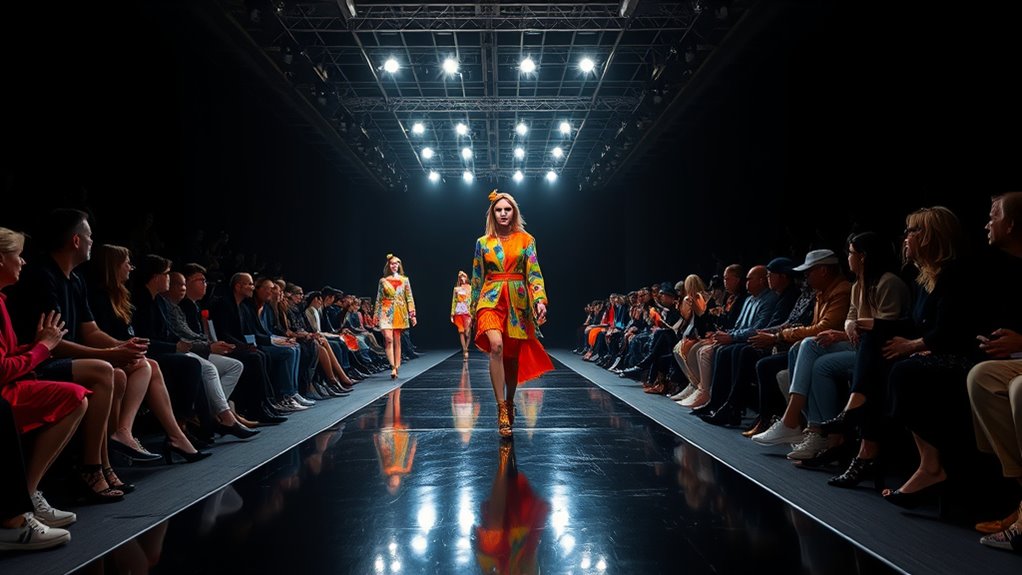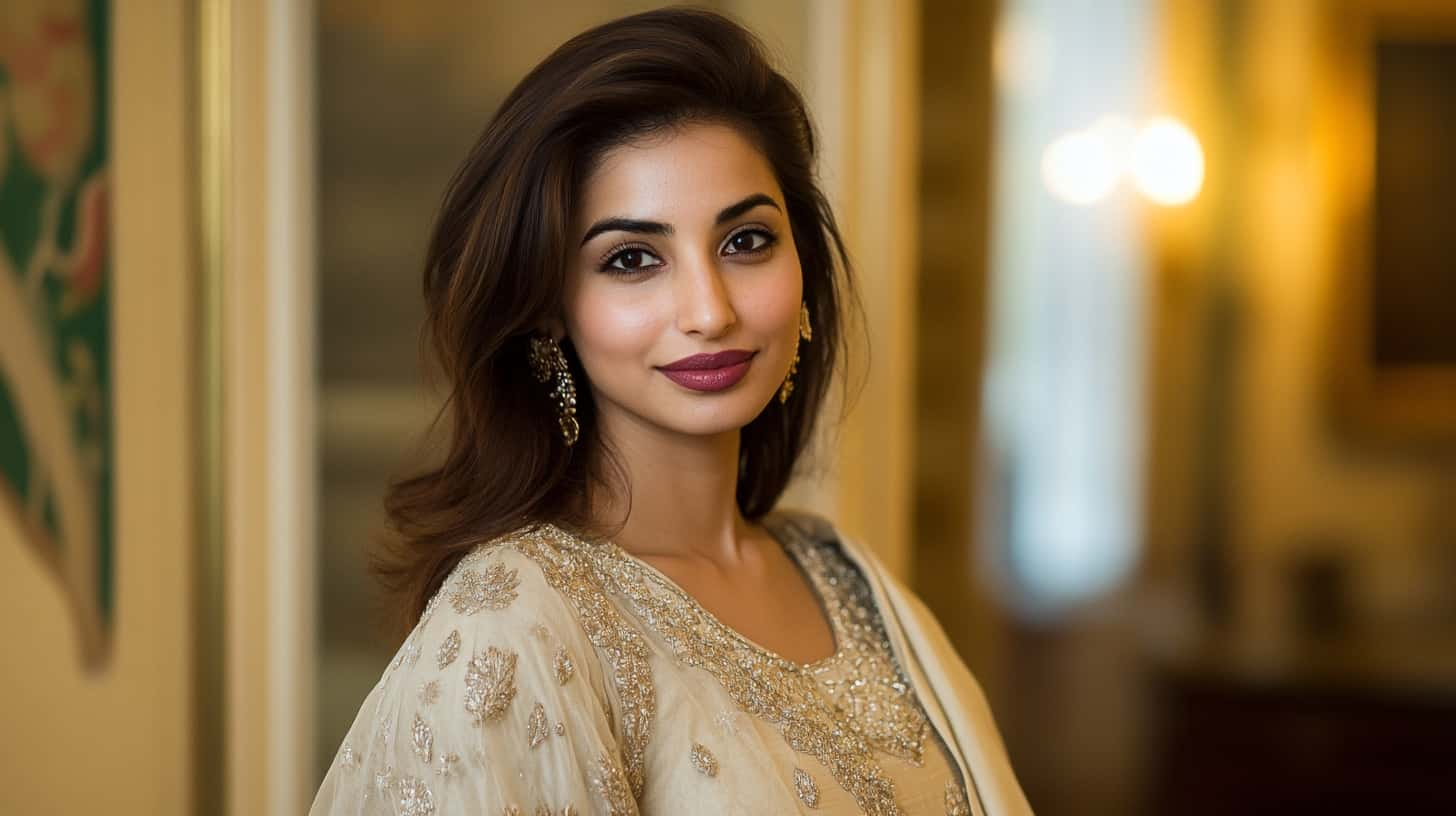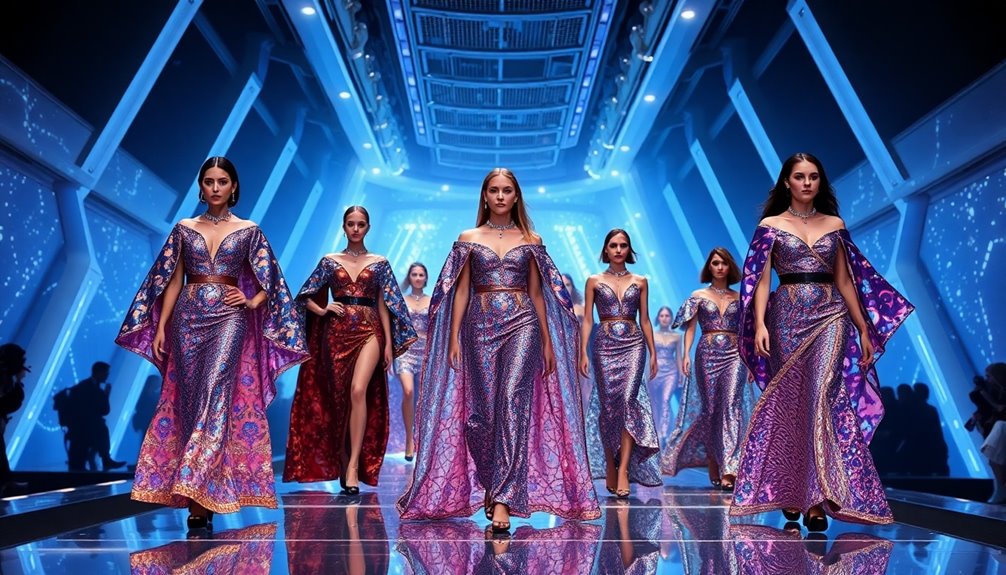To understand a runway show, look beyond just the garments and focus on the overall concept or inspiration behind the collection. Pay attention to details like fabric choices, silhouettes, and styling, as well as how the looks evolve and are sequenced to tell a story. Notice how trends, colors, and themes connect to current fashion movements. Keep exploring the show’s elements, and you’ll uncover the deeper message and creative vision shaping the collection.
Key Takeaways
- Observe the collection’s overall theme and concept to understand the designer’s inspiration and mood.
- Analyze garment details, fabric choices, and silhouettes to identify trends and creative intentions.
- Pay attention to the show’s sequencing and narrative flow to grasp the story or message being conveyed.
- Appreciate styling elements like hair, makeup, and accessories that reinforce the collection’s inspiration.
- Connect design details to broader fashion trends and cultural influences to understand the collection’s relevance.

Attending a runway show can be overwhelming if you’re unfamiliar with its structure and cues. As you settle into your seat, you’ll notice that each element of the show is carefully curated to tell a story or showcase a specific vision. To truly understand what’s happening, start by paying close attention to the overall theme or concept. Designers often draw inspiration from various sources—art, history, social movements—and this inspiration influences the collection’s mood, colors, and silhouettes. Recognizing these designer inspirations helps you appreciate the deeper meaning behind the clothes and how they connect to current fashion trends.
Pay close attention to the theme or concept to deepen your understanding of the runway show.
As the models begin to walk, observe how the garments evolve from look to look. Designers use the runway to highlight key pieces that embody their creative vision. Notice the details: the fabric choices, the cuts, the embellishments. These elements often reflect prevailing fashion trends but are also tailored to showcase the designer’s unique style. By analyzing these details, you can start to see how the collection fits into the larger fashion landscape. For instance, if a collection features oversized silhouettes and earthy tones, it might be inspired by a desire for comfort and sustainability—trends that are prominent in current fashion.
Pay attention to the sequencing of the show. Many designers craft a narrative through the order of their looks, gradually building intensity or shifting themes. This sequencing provides clues about what’s meant to be the standout piece or the message the designer wants to convey. Sometimes, the opening looks set the tone, while the finale packs a visual punch with more elaborate designs. Recognizing this narrative flow helps you interpret the collection’s purpose and the designer’s creative process.
Additionally, understanding the importance of visual storytelling in runway presentations can deepen your appreciation for how designers communicate their concept beyond just clothing. Lastly, observe the details beyond the garments—such as hair, makeup, and accessories. These styling choices are deliberate and often reinforce the collection’s inspiration or align with current fashion trends. For example, a monochrome palette with minimalist accessories might point to a modern, sleek aesthetic, while bold, eclectic styling could reflect a rebellious attitude or a nod to streetwear influences. Piecing together these cues allows you to understand not just what’s on the runway, but why it matters in today’s fashion scene. By honing your attention to these elements, you’ll gain a richer appreciation of how runway shows serve as a snapshot of evolving style and innovative design.
Frequently Asked Questions
How Do Designers Choose the Models for Their Shows?
Designers choose models for their shows based on casting decisions that highlight model diversity, aiming to reflect their brand’s vision and audience. They consider factors like height, size, ethnicity, and unique features to create an inclusive, striking runway. You’ll notice they seek a mix of looks to showcase their collection’s versatility and appeal broadly. This thoughtful selection process guarantees the show resonates with diverse viewers and emphasizes their commitment to representation.
What Role Does Music Play in Runway Presentations?
You might not realize it, but music selection plays a vital role in runway presentations, setting the mood instantly. Studies show that 78% of viewers feel more connected to a show when the music matches the collection’s vibe. As a result, the right soundtrack enhances mood setting, guiding the audience’s emotions and highlighting the designer’s vision. So, pay attention to how the music amplifies each runway moment.
How Can I Predict Upcoming Fashion Trends From Runway Shows?
You can predict upcoming fashion trends by analyzing runway shows for color forecasting and fabric selection. Notice recurring color palettes and innovative fabrics; these signal future trends. Pay attention to designers’ choices and how they combine colors and textures. By tracking these patterns over multiple shows, you’ll identify shifts in style and anticipate trends before they hit mainstream fashion, giving you a strategic edge in fashion forecasting.
What Is the Significance of the Runway’s Layout and Staging?
Did you know that a runway’s layout and staging can influence over 70% of your perception of the collection? The significance lies in how lighting design and stage symmetry create the mood and focus. A symmetrical stage emphasizes balance, while dynamic lighting highlights key pieces. These choices guide your attention, evoke emotions, and enhance the overall narrative, making the show memorable and impactful for everyone watching.
How Do Cultural Influences Shape Runway Collections?
Cultural influences shape runway collections by infusing designs with cultural symbolism and traditional motifs that resonate deeply. You see designers draw inspiration from diverse global influences, blending colors, patterns, and techniques to create unique pieces. This fusion celebrates cultural diversity and storytelling, making collections richer and more meaningful. By incorporating these elements, you can observe how fashion becomes a global dialogue, reflecting interconnected histories, values, and identities through innovative, culturally inspired designs.
Conclusion
So, now that you know how to read a runway show, go ahead and impress your friends with your fashion expertise—because nothing screams style like confidently analyzing models’ walk and designers’ hidden messages. Remember, it’s all just a fancy game of dress-up, so don’t take it too seriously. After all, whether you get it or not, at least you’ll look fabulous trying. Happy runway reading—may your fashion sense never stumble!










